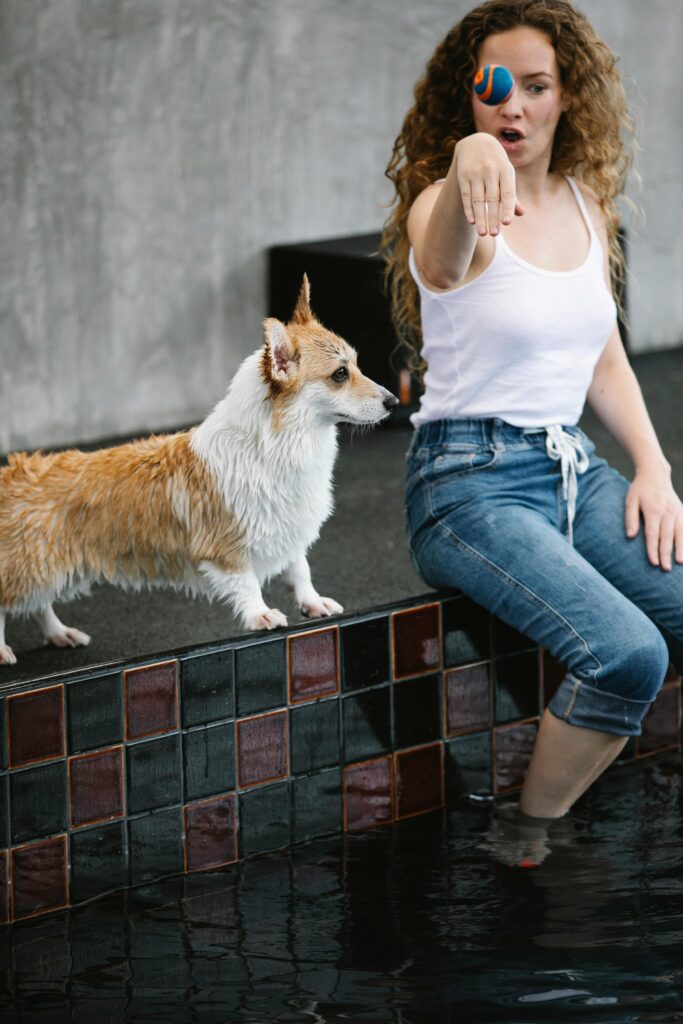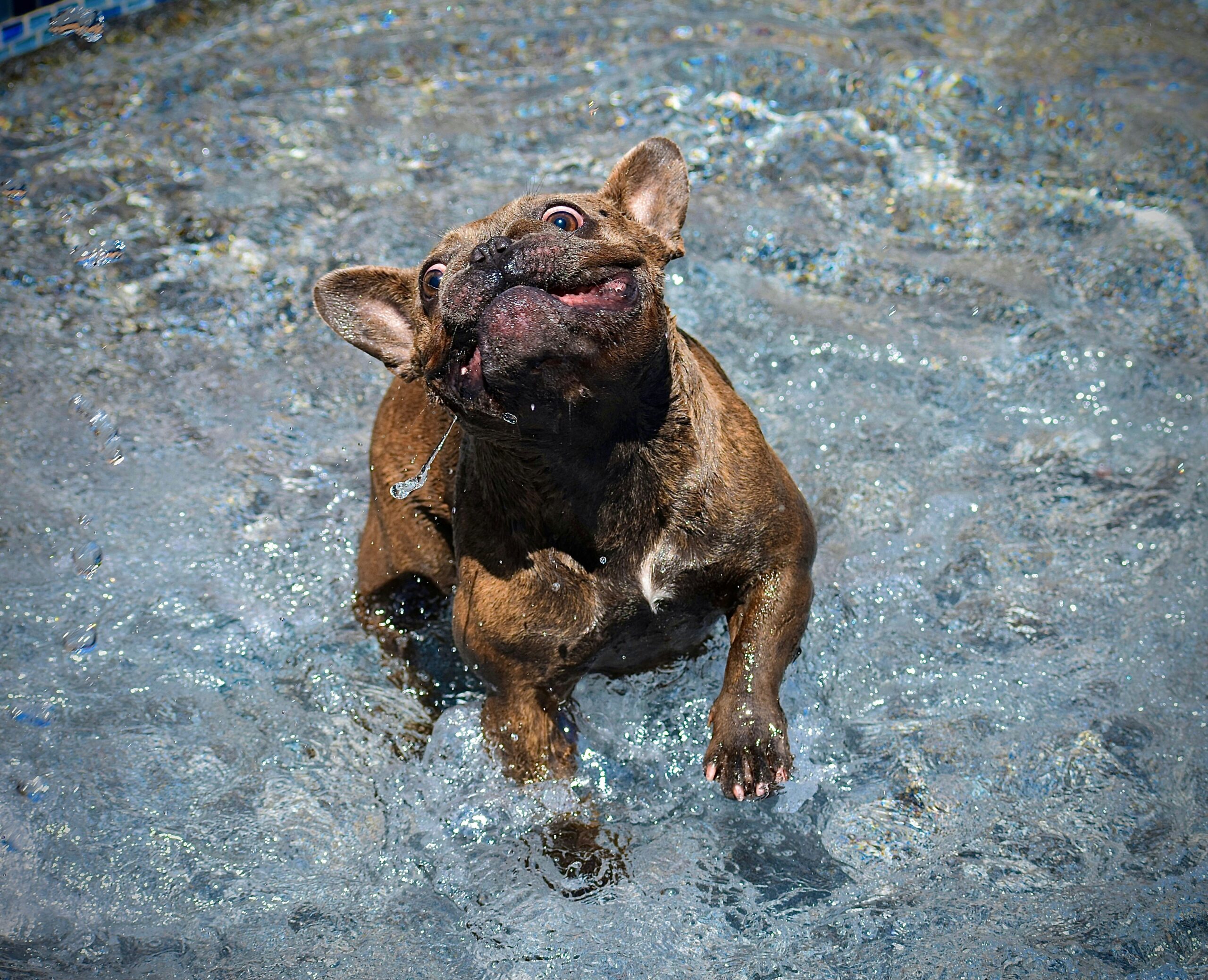As temperatures rise and families spend more time by the pool, ensuring the safety of our fur babies becomes paramount. Each year, countless pets are at risk of drowning or injury around residential pools. By raising awareness and sharing expert tips, we can help prevent these tragedies and ensure that summer fun is safe for everyone, including our pets. Pool Patrol, a leading pool safety company, in collaboration with Dr. Jennifer Watt, DVM and head of emergency medicine at Fairfield Animal Hospital is on a mission to educate pet owners about the importance of pool safety for their pets. We chatted with two experts to learn more. —Vita Daily

As temperatures rise and more families spend time by the pool, what are the most common risks pets face around residential pools, and how can pet owners mitigate these dangers?
Jennifer Watt, DVM: The most common risks pets face around residential pools include drowning, water intoxication, and overexertion. By implementing some key safety tips, pet owners can help reduce these risks and keep their pets safe.
First, supervision is non-negotiable; always keep an eye on pets when they are near the pool. Teaching pets to swim can build their confidence and swimming ability, helping to reduce (but not eliminate) emergency situations. Life jackets are great for pets that are not strong swimmers, providing extra buoyancy and security if they enjoy the water. Additionally, installing pet ramps can help pets easily exit the pool when they are tired, preventing exhaustion and reducing the risk of drowning.
Allan Horwood: In addition to supervision, training and ramps, it’s important to be aware of the hazards associated with floating solar covers. Solar covers can create a false sense of security as they look like solid ground, but they can trap pets (and children) underneath if they fall in making it extremely difficult for them to escape. To prevent accidents, avoid using solar covers or always remove them when pets are near the pool area. Instead, consider using retractable pool safety covers, which are designed to prevent accidental falls into the pool. These covers can support substantial weight, ensuring that pets, children, and even wildlife are safe from falling into the water when the pool is not in use.
Drowning is a significant risk for pets unfamiliar with water. What steps can pet owners take to teach their pets to swim and ensure they are safe around pools?
Jennifer Watt, DVM: Gradually introduce your dog to water in a calm, shallow area, using positive reinforcement and patience. Start by letting them get their paws wet and gradually encourage them to venture further. Use a life jacket for added safety and provide lots of praise and treats. Toys and games can help to add an element of fun to swimming lessons, as a lot of pets don’t necessarily love swimming, but love games of fetch or tag and bonding with their owners. Ensure they know where the pool exits are and practice teaching pets how to use them. Swimming can be both stressful and tiring for dogs who aren’t used to it, so make sure to keep swimming lessons short and never force your pet into the pool, as this can create a fear of water.
Can you explain what dry drowning is, and what symptoms should pet owners watch for if they suspect their pet has ingested water while swimming?
Jennifer Watt, DVM: Dry drowning occurs when water is inhaled into the lungs or airways, causing the airway to spasm and close up. Unlike typical drowning, dry drowning can happen hours after the pet has left the water. Symptoms to watch for include coughing, difficulty breathing, lethargy, and blue gums. If your pet exhibits these signs after swimming, seek emergency veterinary care immediately, as this condition can be life-threatening. Prompt recognition and treatment are essential to prevent severe complications.
What are the signs of distress or fatigue in pets while swimming, and what immediate actions should owners take if they notice these signs?
Jennifer Watt, DVM: Pets often have so much fun in the water that they don’t know when to stop, leading to fatigue and distress. Signs of distress or fatigue include excessive panting, paddling slowly, struggling to keep their head above water, and the rear part of their body starting to sink. You might also notice frantic paddling or attempts to reach the pool edge. If you see these signs, help your pet out of the water immediately. Provide a shaded area for rest, offer fresh, cool water, and monitor them closely for any ongoing signs of distress or discomfort.
Water intoxication can be a serious condition for pets. Could you elaborate on the symptoms of water intoxication and how pet owners can prevent it?
Jennifer Watt, DVM: Water intoxication, though rare, is a serious and potentially fatal condition for pets. It occurs when a pet ingests excessive amounts of water, leading to a dangerous dilution of sodium in the blood. Symptoms can include vomiting, bloating, loss of coordination, lethargy, pale gums, and in severe cases, seizures and coma. If you notice any of these symptoms in your pet, please call your nearest emergency veterinary hospital. To prevent water intoxication, monitor your pet’s water intake while swimming, discourage biting at the water and take regular breaks out of the pool. Use toys designed for water play that are highly visible, float upright, and are easy for dogs to retrieve without swallowing large amounts of water. Supervision and appropriate water toys can help ensure a fun and safe swimming experience for your pet.
What post-swim care tips would you recommend for pets, especially regarding the potential effects of chlorine exposure?
Jennifer Watt, DVM: After a swim, rinse your pet thoroughly with fresh water to remove chlorine and other pool chemicals, which can irritate their skin and dry out their coat. Pay special attention to their ears, as moisture can lead to infections; dry them gently with a towel or cotton pads. Check your pet’s paws for any irritation or damage, as pool surfaces can sometimes cause abrasions. Additionally, brushing your pet’s fur after rinsing helps remove any remaining chlorine and prevents matting. Provide fresh drinking water to help flush out any ingested pool water and ensure your pet stays hydrated.
What pool safety measures, such as safety pool covers, fencing, alarms, and pet ramps, do you recommend to pet owners to prevent accidents and ensure their pets’ safety around pools?
Jennifer Watt, DVM: One safety tip I recommend to all of my patients with pools is the installation of pet ramps. Pets can easily become tired while swimming, and without an accessible way to exit the pool, they may struggle to get out, increasing their risk of drowning. Pet ramps provide a non-slip, visible exit point that pets can use to climb out of the water safely and easily. It’s important to make sure these ramps are securely attached, easy for pets to locate and they know how to use them.
Allan Horwood: Adding to what Dr. Watt mentioned, there are several critical pool safety measures every pet owner and parent should consider.
First, retractable pool safety covers are essential. Unlike solar covers, safety pool covers are designed to support a significant amount of weight, preventing pets from falling into the pool and getting trapped beneath the cover. A true safety cover should be able to support at least the weight of a full grown adult male without giving way. These covers provide the safest available option as they are designed to prevent accidental falls into the water
Second, pool fences are a must-have for any pet owner. A sturdy, well-installed fence can prevent pets and children from accessing the pool area unsupervised. Make sure the fence is at least four feet high and has a self-closing, self-latching gate to ensure it remains secure at all times.
Third, pool alarms add an extra layer of security. These devices can alert you if someone—or your pet—enters the pool. There are surface wave alarms, sub-surface disturbance alarms, and even wearable alarms for pets that will sound if they get wet.
Finally, regularly removing pool toys after playtime can also prevent pets from being tempted to jump into the pool to fetch their toys unsupervised.

Be the first to comment